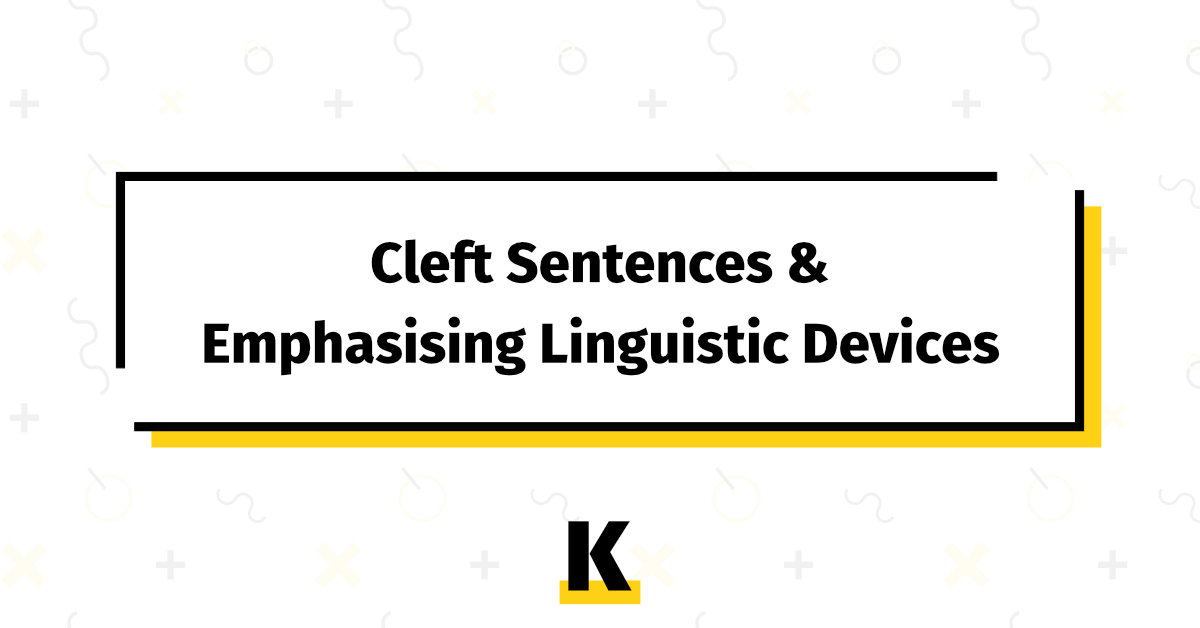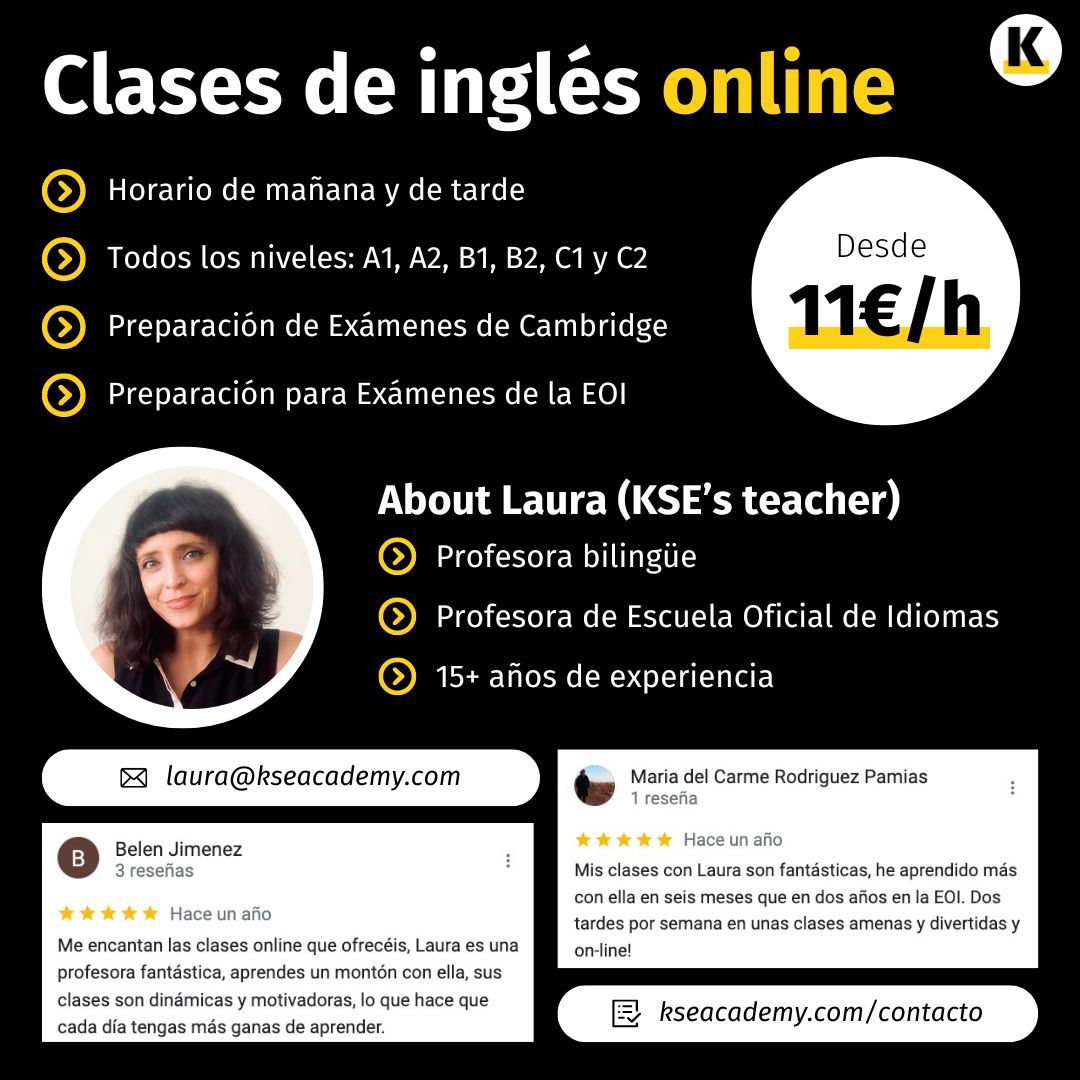I love English grammar, especially when we’re talking about advanced English grammar. I love understanding it, and what helps me best to understand it is to have to explain it to my students. So in this post I’m bringing you one of the most advanced grammatical points I explain to my C1/C2 Students: cleft sentences. I know, I know what you’re thinking… «What is a cleft sentence, Luis?». Well, after you read this post you’ll know exactly what a cleft sentence is and how to use it.

What is a cleft sentence?
A cleft sentence is a complex sentence (main clause + dependent clause) that has a meaning that could be expressed by a simple sentence. We use them to create emphasis by drawing attention to a particular aspect of the sentence. The term «cleft» means «divided» or «split», and, in a cleft sentence, some parts are moved from their normal position to a different one to give it more emphasis. Most cleft sentences are constructed by using a relative pronoun.
Types of cleft sentences
What follows is a list of the most common types of cleft sentences:
All/The only (thing)-cleft
Your happiness interests me. → The only thing that interests me is your happiness.
I think about you. → All (that) I think about is you.
Wh-cleft
He saw your dad. → (The person) whom he saw was your dad.
He wanted to buy a Fiat. → What he wanted to buy was a Fiat. / What he wanted was to buy a Fiat.
Reversed Wh-cleft
I used to live in that house. → That house is where I used to live. / That house is the one in which I used to live.
I read the Da Vinci Code last summer. → The Da Vinci Code is what I read last summer.
On hot days we turn the AC. → Turning on the AC is what we do on hot days.
It+to be-cleft
You broke the window. → It was you who broke the window.
A gun shot has ended John’s life. → It has been a gunshot that has ended John’s life.
Note: with most cleft sentences, you can choose to emphasise the subject or the object of the original sentence.
Example: I used to live in a house
Subject: It was me who used to live in a house. (not someone else)
Object: It was a house where I used to live. (not a flat)
Other ways of emphasising
Since cleft sentences are mainly used to emphasise a particular aspect or element of a sentence, I thought it would be a great idea to teach you how to use other linguistic devices to give emphasis to some word or element.
Stressing the verb or auxiliary verbs
Stressing the auxiliary verb in a sentence can help to show determination, to convince or to contradict someone.
You will be back before twelve, or else.
– I don’t think you’re capable of cheating.
– I am capable, you’ll see.
In the present simple or past simple we use do or did, except with the verb “to be”:
– You didn’t do the washing up, did you?.
– I did wash up, I swear.
So / such
I’m so hungry (that) I could eat a whole cow by myself.
She’s such a beautiful woman!
Learn to use so and such properly.
Exaggerated vocabulary
I’m starved to death!
He’s completely hammered! ( = extremely drunk)
Intensifying adverbs
The film was extremely amusing.
That’s utterly ridiculous!
Simile
It’s as cold as ice.
It’s hot as hell!
Questions or negatives with “on earth”, “in the world”, “in creation”
Who on earth would go out in this cold?
There’s nothing in the world as pleasant as a warm bath.
Intonation
You can decide to stress a particular element in a sentence to convey a specific meaning.
Sean loves to drink coffee in the mornings. (not someone else)
Sean loves to drink coffee in the mornings. (not like or hate)
Sean loves to drink coffee in the mornings. (not to prepare it)
Sean loves to drink coffee in the mornings. (not milk or tea)
Sean loves to drink coffee in the mornings. (not in the afternoons)
I hope you guys enjoyed this explanation of cleft sentences and other emphasising linguistic devices. If you have any questions, let me know in the comments. And until next time, don’t forget to keep smiling!

4 comentarios en “Cleft Sentences in English & Other Emphasising Linguistic Devices”
Thanks you very much for the lessons!
You are most welcome. Thanks for your comment!
Hi Luis,
May I ask you whether in the structure «it is X that Y» is possible to use «which» instead of «that»?
For example:
It was France that / which? first started producing perfumes.
Thanks a lot for your help and for your content. It is great and very useful!
Hi, Silvia. I’m actually not 100% sure, but to me it sounds better to use «that». Sorry that I can’t be of more help here!